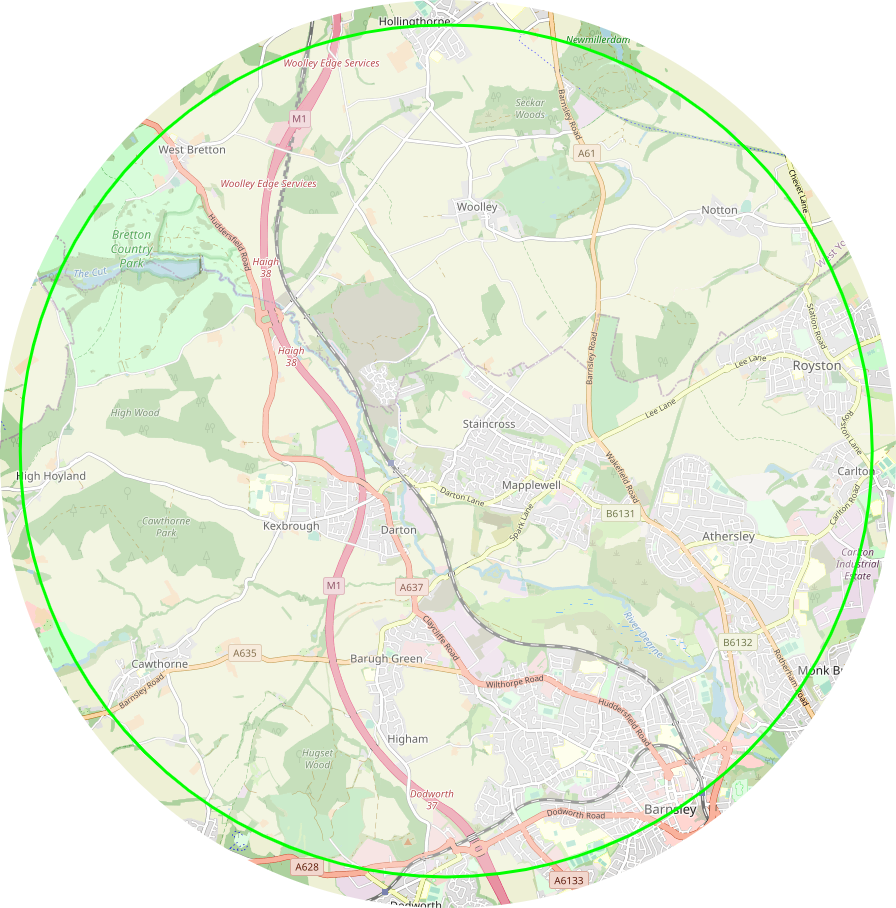Congratulations!
You have in your possession a jar of probably the finest local honey from Yorkshire.
| Jar Weight: | 227g/ 8oz |
| Best Before: | 02/08/2025 We put a three year best before date on our honey, however if kept sealed in an airtight container, honey remains edible indefinitely—even if it crystallises or darkens over time. Case in point? In 2015, archaeologists discovered pots containing edible 3,000-year-old honey in an Egyptian tomb. |
| Storage Instructions: | Simply keep it in a cool location away from direct sunlight and in a tightly sealed container. Avoid storing honey in metal because it can oxidize. |
| Apiary Location: | Staincross |
| Hive(s) Extracted from: | 9,7&3 |
| Maximum Forage Radius: |
Honey bees can fly up to 3 miles from their hive to collect nectar and pollen, although usual flights are shorter than this. The map above is provided to indicate the possible areas in which the bees that created your jar of honey foraged. |
| Possible Floral Content: | Soya-bean, Indian Balsam, Bramble, Dewberry,Common Nettle,Round-headed Leek, Rosebay Willowherb, Common Knapweed, Sea Mayweed, Creeping Thistle, Turnip, White Clover, Cabbage, Rock Stonecrop, Weld, Tyrol knapweed, Garden Privet, Common Field-speedwell, Stinking Tutsan, Heather, Speedwell, Cat’s-ear, American Willowherb, Borage, Purple Toadflax, Common Fleabane, Narrow-leaved Bird’s-foot-trefoil, Spear-leaved Orache Yarrow Meadovesweet, Autumn Hawkbit, Rubus grossus, Rubus silvaticus, Rubus orthostachys, Hydrangea, Centaurea pectinata, Taraxacum officinale. How do we know? We take part in the National Honey Monitoring Scheme which has confirmed that, amongst others, pollen from the list of flowers above has been found in previous samples of our honey from this area. We cannot, however, claim that we know exactly what flowers our bees forage on. |
| Notes: | SP0322 |
Honey and Crystallisation:
Don’t worry if your honey starts looking cloudy. Crystallisation is a natural process affected by temperature, the ratio of glucose and fructose, and pollen. Crystallised honey is still delicious and safe to eat, but if you’d rather go for the original, simply place the container in a bowl of warm water and stir.

